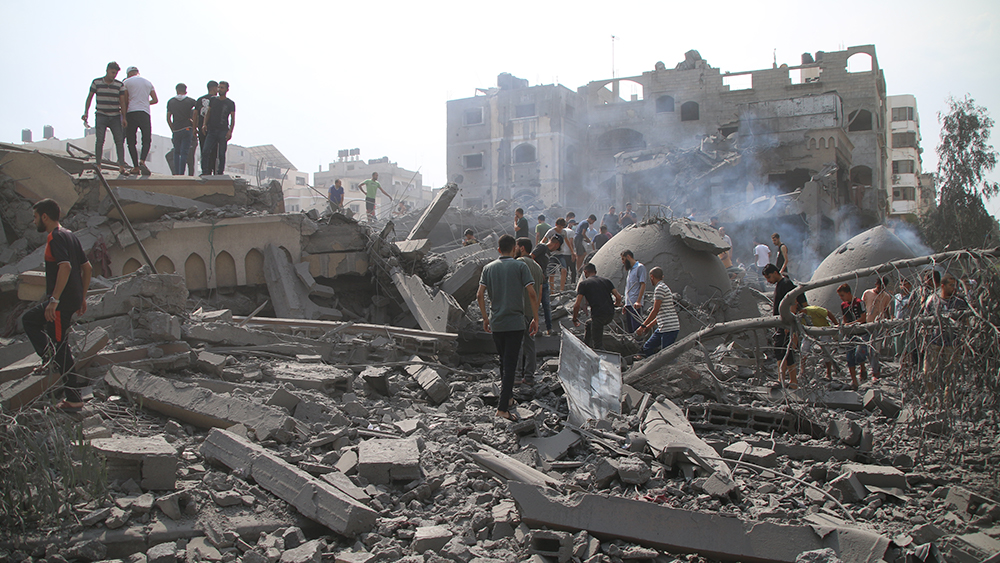Over a decade will be needed to remove rubble, explosives from Israeli bombing of Gaza
The vast amount of rubble, including unexploded ordnance, left by Israel’s bombing of Gaza could take over a decade to remove, a UN official
said on 26 April, highlighting the massive scope of Israel’s targeting of civilian urban areas since the war began in October.
(Article republished from
TheCradle.co)
Pehr Lodhammar, a senior officer at the United Nations Mine Action Service (UNMAS), told a briefing in Geneva that the war had left an estimated 37 million tons of debris in the widely urbanized, densely-populated strip.
He said that although it was impossible to determine the exact amount of unexploded ordnance found in Gaza, it was projected that it could take 14 years under certain conditions to clear the debris, including rubble from destroyed buildings.
“We know that typically there’s a failure rate of at least 10% of land service ammunition that is being fired and fails to function,” he said. “We’re talking about 14 years of work with 100 trucks.”
Reuters notes that Israel’s bombing and ground campaign “has reduced much of the narrow, coastal territory of 2.3 million people to a wasteland with most civilians homeless, hungry and at risk of disease.”
In November, the
Associated Press reported that Israel’s bombing campaign had turned much of northern Gaza into an “uninhabitable moonscape. Whole neighborhoods have been erased. Homes, schools, and hospitals have been blasted by airstrikes and scorched by tank fire. Some buildings are still standing, but most are battered shells.”
Israel’s bombing then left similar destruction in its wake in central and southern Gaza, including in the besieged enclave’s second-largest city, Khan Yunis.
Israeli forces are currently bombing Rafah, a city on the Gaza–Egypt border, in preparation for a ground assault there as well.
“An estimated 45,000 bombs were dropped on the Gaza Strip in the first three months of the conflict. However, based on a failure rate of between 9% and 14%, it is possible that several thousand bombs did not work as planned and did not explode on impact, ending up scattered in the ruins and all over the territory,” Anne Hery, advocacy director at NGO Humanity & Inclusion,
told AFP in March.
Explosive remnants of war not only kill many civilians but also cause complex and disabling injuries that are difficult to treat amid war.
“Some injuries caused by explosive remnants of war require lifelong support, not to mention the psychological trauma that affects victims, sometimes entire communities, for many years,” said Hery. “And not just when you’ve been a victim or lost loved ones, but also when you’ve lived for weeks in fear of the bombs.”
Israel’s war is increasingly leaving Gaza uninhabitable. Roughly 85 percent of Gaza’s 2.3 million residents have been internally displaced, including over a million in Rafah. Many are living in makeshift tent cities. Israeli officials have stated their desire for Palestinians to “voluntarily” leave Gaza to make way for permanent Israeli control and the establishment of Jewish settlements in the place of destroyed Palestinian cities.
Read more at:
TheCradle.co












